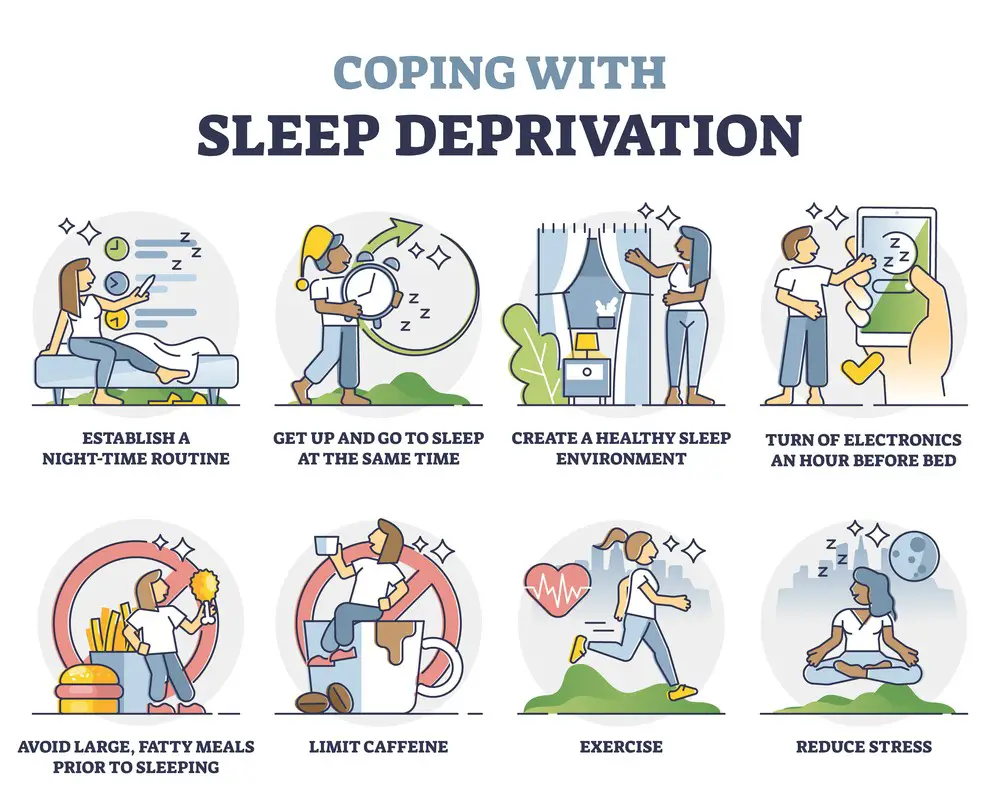As a BetterHelp affiliate, we receive compensation from BetterHelp if you purchase products or services through the links provided
Sleep training can be challenging for many parents, often filled with sleepless nights and uncertainty. The chair method is a form of gentle sleep training that involves a gradual process of teaching your child to fall asleep independently. It’s a middle-ground approach that offers a comforting presence to your child while fostering the development of self-soothing skills, making it a popular choice among parents looking for a less abrupt sleep training method.
As you embark on this journey, you must realize that every child is unique and has no one-size-fits-all strategy. Determining the right age to begin sleep training and preparing yourself and your child for the process are foundational steps. During the implementation of the chair method, you’ll experience phases where you may need to comfort your child without picking them up, signaling your support while encouraging self-reliance.
Key Takeaways
- The chair method is a balanced sleep training approach to help children learn to sleep independently.
- Preparation and understanding your child’s readiness are crucial for effective sleep training.
- Consistent comforting techniques during the process aid in fostering self-soothing abilities in your child.
Understanding the Chair Method
The Chair Method is a sleep training strategy that blends comfort with independence, allowing you to be present while teaching your child to fall asleep on their own.
Core Principles
This approach foregrounds your calming presence without directly intervening to help your child sleep. Here are the core principles:
- Parental Presence: You remain in the room, silently offering security.
- Gradual Withdrawal: Night by night, you move the chair farther from the crib until your presence is no longer needed.
- Consistency: Apply the method at every bedtime and naptime to help your child understand and adapt.
Step-by-Step Approach
Let’s break down the Chair Method:
- Preparation:
- Set up a sleep-friendly environment with a comfortable temperature and minimal noise.
- Select a sturdy chair without wheels for safety.
- Procedure:
- Night 1: Place the chair next to the crib or bed. Stay seated until your child falls asleep.
- Subsequent Nights: Move the chair about two feet away each night, increasing the distance until you’re outside the room.
- Duration:
- Spend less time in the room incrementally.
- If your child wakes up, wait a few moments before checking in.
Key Takeaway: The Chair Method centers on gradually decreasing your in-room presence, fostering your child’s ability to sleep independently within a comforting framework.
 Preparing for Sleep Training
Preparing for Sleep Training
Before you start the sleep training journey, setting the stage for success is essential. Creating a conducive sleep environment and establishing a bedtime routine is at the core of preparing for this transition.
Setting Up a Sleep-Inducing Environment
- Bedroom Temperature: Maintain a room temperature of around 68-72°F, as a cooler room can enhance sleep quality.
- Lighting: Use blackout curtains or shades to make the room dark, signaling to the body it’s time to wind down.
- Noise Levels: Consider a white noise machine to drown out external sounds and provide a soothing backdrop for sleep.
- Comfort: For safety, ensure the crib mattress is firm, and the bedding is soft and free of loose items.
- Routine Elements: Include quiet activities in the room, such as reading a book, which can become a signal for sleep.
Key Takeaway: An environment tailor-made for sleep encourages better sleep habits and eases training.
Creating a Consistent Bedtime Routine
- Timing: Start your routine at the same time each night to align with your child’s circadian rhythm.
- Activities: A warm bath, gentle massage, or quiet storytelling can settle your child.
- Order: Keep the sequence of activities consistent. This predictability helps your child understand that bedtime is approaching.
- Duration: Aim for a routine that’s not too long or complex – at most 30 minutes.
Key Takeaway: A structured and predictable bedtime routine is the cornerstone of good sleep habits and successful sleep training.
Determining the Right Age for Sleep Training
When contemplating sleep training, one of the essential factors you’ll consider is your child’s age. Babies develop at their own pace, so there’s no one-size-fits-all answer, but generally, sleep training is recommended for babies between 4 to 6 months old. This is when most babies are physiologically capable of sleeping through the night and can learn to self-soothe.
Age Considerations:
- Newborn to 3 Months: Newborns need to feed frequently and aren’t ready for sleep training.
- 4 to 6 Months: A prime window to start as your baby establishes a more predictable sleep pattern.
- Older than 6 Months: While it’s never too late, older babies might have more ingrained sleep habits, making the process potentially more challenging.
Consulting with your pediatrician can provide guidance tailored to your baby’s development and health. They can confirm whether your child is at a suitable age for sleep training or if there are any concerns to address first.
Key Points:
- Health: Ensure your baby is healthy and thriving before starting.
- Consistency: Regardless of age, maintaining consistency in your approach is crucial.
- Adaptability: Be prepared to adapt the method to suit your toddler’s unique needs and responses.
Key Takeaway: Your baby’s readiness for sleep training depends on their individual development and health status, typically starting from 4 to 6 months. Always check in with your pediatrician to determine the best time for your little one.
Implementing the Chair Method
When introducing the Chair Method, remember patience is key while facilitating your baby’s ability to sleep independently.
First Night Strategies
Start with your usual bedtime routine, setting a gentle and calm atmosphere to let your little one know it’s time to sleep. Once in the crib, take a seat nearby:
- Stay Close: Sit in a chair beside the crib, offering silent emotional support.
- Minimal Interaction: Limit your responses to soft hushing or brief patting if there’s crying, aiming to soothe without picking up your baby.
Remember, the goal for the first night is simple presence, serving as a comfort as they learn to self-soothe.
Progressive Adjustments
Gradually increase the distance between your chair and the crib each night:
- Night 2: Move the chair halfway to the door.
- Subsequent Nights: Shift closer to the door until you’re outside the room.
Each progressive adjustment fosters your child’s confidence to sleep independently while still providing assurance.
 Addressing Night Waking
Addressing Night Waking
Night waking can be a hurdle in sleep training. Here’s how to manage it with the Chair Method:
- Consistency Is Critical: Respond to night waking with the same minimal interaction as bedtime.
- Silent Comfort: Offer a reassuring presence without encouraging wakefulness.
By staying consistent, your baby will better understand the expectation to self-soothe and return to sleep.
Key takeaway: Stick with steady, incremental changes to build your baby’s self-soothing skills each night.

Handling Crying and Comforting Your Child
When your little one cries during sleep training, staying calm is crucial. Your approach to soothing and reinforcing independence will help teach your child how to self-settle.
Balancing Soothing with Independence
As tears come, your instinct might kick in to prevent crying entirely. Yet, a key part of the chair method is to encourage self-soothing. Follow these guidelines:
- Begin with staying close by in a chair, offering presence as a form of comfort.
- Gradually increase the distance between your chair and the crib each night.
- Maintain a consistent bedtime routine to signal it’s time for sleep.
Key Takeaway: Strike a balance between providing comfort and promoting your child’s ability to fall asleep on their own.
Providing Verbal and Physical Comfort
Your interaction shapes this training phase. Aim to:
- Offer verbal reassurance in a soft, soothing tone to calm your child without picking them up.
- Use gentle physical gestures, like a pat on the back or a soft touch, especially when the crying isn’t calming down.
Key Takeaway: Your words and touch are powerful tools in offering comfort while supporting your child in learning to sleep independently.
Remember, consistency in your response is essential to help your child understand and trust the sleep process.
 Sleep Training Methods Comparison
Sleep Training Methods Comparison
Selecting a sleep training method can be challenging with various techniques available. This section compares different approaches to help you make an informed decision based on your parenting style and child’s needs.
Chair Method versus Ferber Method
Chair Method: It’s a gradual process as you move the chair farther and farther each night until you are no longer in the room, teaching independence without leaving your child to cry it out.
Ferber Method: Also known as graduated extinction, this strategy involves laying your baby awake and leaving the room for progressively longer periods if they cry, checking in at set intervals. It can be quicker than the Chair Method but may involve more crying initially as your child adjusts.
Key Takeaway: Choose the Chair Method if you prefer a gentler approach and are comfortable with a potentially longer process. The Ferber Method may suit you if you want quicker results and can handle some crying.
Gentle Methods and No-Cry Approaches
Gentle Sleep Training: These methods focus on minimizing tears and stress for your baby. Techniques can include the ‘Sleep Lady Shuffle’ or ‘fading,’ which involve staying with your child while they learn to sleep independently or gradually reducing your presence.
- No-Cry: This philosophy stresses the importance of finding a solution without letting your baby cry it out. It may require more patience and time, as the goal is to soothe your baby back to sleep every time they wake up during the night.
Key Takeaway: Gentle methods and no-cry approaches prioritize your baby’s comfort and often require a longer commitment. These may fit your parenting style if you’re looking to avoid or minimize crying as much as possible.
Adapting to Your Child’s Needs
Every child is unique, and recognizing this is crucial when considering how to implement sleep training methods, such as the chair method. You’ll need to tailor your approach based on your little one’s temperament and developmental stage.
Considering Temperament and Development
Your child’s temperament can significantly influence how they respond to sleep training. Here’s what to keep in mind:
- Temperament: Some kids adapt quickly, while others may resist change. Consistency is key. If your child is sensitive to change, ease into sleep training with gentle reassurance.
- Tip: Start by sitting near the crib and slowly moving the chair away each night.
- Development: Babies and toddlers go through many developmental changes that can disrupt their sleep patterns. If your child is going through a growth spurt or learning a new skill, they might become overtired more easily.
- Strategy: Align the sleep training with your child’s natural sleep schedule and adjust as they grow.
Key Takeaway: Understand your child’s behavior and readiness – it’s the compass guiding you through the ups and downs of sleep training.
When to Seek Professional Help
While the chair method of sleep training can be effective, there are instances where you might need a little extra support. Recognizing these signs early can guide you to appropriate help and ensure your child’s sleep health.
Persistent Challenges
If you have been consistently applying the chair method for several weeks and see no improvement in your child’s sleep patterns, this might be a sign to consult a professional. Persistent night wakings or an inability to self-soothe past the usual adjustment period warrant a deeper look.
Regulatory Concerns
Your child should be comfortable in their crib, which is key to the success of the chair method. If there are issues with the sleep environment, such as difficulty staying in the crib, a pediatric sleep consultant can provide targeted advice and strategies.
Unsure Next Steps
Are you feeling overwhelmed or unsure of the next steps in sleep training? That’s okay, and it happens. A sleep consultant can walk you through the process, offering tailored advice that aligns with your family’s needs.
- Concerning Behaviour: If you notice any unusual or concerning changes in your child’s behavior or mood, do not hesitate to ask for help. It’s important to rule out any underlying issues affecting their sleep.
- Health and Development Worries: If concerns about your child’s health or development potentially impacting their sleep, professional input is crucial.
It’s essential to remember that seeking help isn’t a failure but a proactive step in ensuring your and your child’s well-being.
Key Takeaway: Don’t hesitate to contact a pediatric sleep consultant if you’re struggling with the chair method, especially if it’s affecting your child’s or your own well-being.
Maintaining Healthy Sleep Habits
Creating a solid foundation for independent sleep is crucial for your child’s well-being and development. Here are some strategies to ensure healthy sleep patterns:
- Bedtime Fading Method: Gradually adjust bedtime to a more appropriate time if your child struggles to fall asleep. This means if they’re lying awake for a while, slowly shift bedtime later in small increments until they’re drowsy but awake when put to bed.
- Drowsy but Awake: Place your child in their crib when sleepy but not fully asleep. This helps them associate bed with falling asleep on their own.
- Consistent Bedtime: Establish and stick to a regular bedtime routine. Routine acts as a signal that it’s time to wind down.
Remember, avoid acting out of pressure when implementing any sleep training technique. Each child is unique; what works for one may not work for another.
When aiming for independent sleep, keep in mind to:
- Avoid Overstimulation: A calm and soothing environment before bed minimizes distractions and helps your child relax.
- Sleep Training Technique Relevance: Incorporate a sleep method that fits your parenting style, adapting it as needed to suit your family dynamics.
Incorporating these habits isn’t just about the child; it’s about nurturing a habit that suits both parent and child.
Key Takeaway: Your patience and consistency are the bedrock of helping your child learn to sleep independently. Stick to a routine and adjust based on what’s working for your child.
Common Challenges and Solutions
Navigating the sleep training journey can be challenging, but understanding common hurdles and their fixes can make all the difference.
Dealing With Sleep Regressions
When your child hits a sleep regression, it can feel like a major setback. Sleep regressions often occur at predictable ages, such as 4 months, 8 months, and 18 months. Here’s how you can manage:
- Stay Consistent: Keep up with the chair method, even if progress seems to dip.
- Adjust Sleep Environment: A soothing environment may include using devices like the Snoo, which can help ease a regression.
Key Takeaway: Stay the course. Regressions are temporary.
Managing Expectations and Patience
Patience is key when sleep training. It’s easy to hope for quick results, but the reality can differ. Keep these points in mind:
- Set Realistic Goals: Understand that it’s a process. Some children might take longer to adjust.
- Self-Care: Take care of yourself. Parental burnout isn’t conducive to patience or effective sleep coaching.
Key Takeaway: Patience breeds progress. Take care of yourself to better support your child.
Easing the Transition for Parent and Child
Transitioning to the chair method can be an adjustment for everyone. Here’s how to smooth the process:
- Gradual Presence: Start close to your child’s crib and move the chair further away over time.
- Comforting Routines: Integrate calming activities like nursing or reading before bedtime.
Key Takeaway: Routines and presence matter. A gentle transition can ease the process for both you and your child.
The Scientific Perspective
When considering the chair method for sleep training, it’s essential to look at the science behind it. This approach is often compared to other gentle sleep training methods, such as the fading sleep training and the pick-up put-down method.
- Peer-Reviewed Studies: Data suggests that the gradual process involved in the chair method can be effective. In this method, you sit in a chair next to your baby’s crib each night until sleep occurs. Over time, you move the chair farther away until you’re out of the room.
- Gradual Process: Research indicates that a slow transition can minimize nocturnal distress and promote overall emotional well-being for infants and parents.
- Health Organizations: Leading health organizations recognize the potential benefits of gentle sleep training methods. Although guidelines emphasize the importance of maintaining a healthy emotional environment for infants, they rarely endorse a single method, encouraging caregivers to find a strategy that suits their child’s needs.
- Weight Considerations: Evidence does not directly tie sleep training methods to infant weight changes. However, it’s acknowledged that well-rested babies may have better feeding patterns and overall growth.
As you explore the chair method, keep these scientific perspectives in mind:
- Look for articles from academic research institutions to ensure information accuracy.
- Understand that evidence supports gentle sleep training methods as effective and sensitive to your child’s needs.
- Remember, it’s a gradual process; patience is key to success.
Key Takeaway:
The chair method is backed by science as a gradual, gentle approach to sleep training that resonates well with babies and parents. Always verify your information sources and proceed at a pace comfortable for your child.
Frequently Asked Questions
Discovering how to implement the chair method for sleep training can raise several questions. This section provides specific answers to some of the most common queries.
What are the main steps involved in implementing the chair method for sleep training?
- Establish a soothing bedtime routine.
- Sit on a chair near your child’s bed when it’s time to sleep.
- Gradually move the chair farther from the bed every few nights until you’re outside the room.
Key Takeaway: The chair method is all about gradual withdrawal, offering comfort with your presence while encouraging independent sleep.
How long does it typically take for the chair method to effectively establish sleep patterns in toddlers?
It usually takes about two weeks for the chair method to take effect, but this varies with each child. Some may adapt within a few days, while others might need a little longer.
Key Takeaway: Patience is crucial, as the time frame can differ from one toddler to another.
At what age is it appropriate to start using the chair method for sleep training a child?
The chair method is typically introduced when children are over six months old, as they are developmentally ready for sleep training at this stage.
Key Takeaway: Consider whether your child seems ready for sleep training before starting the chair method.
Can the chair method for sleep training be used for managing middle-of-the-night awakenings?
Yes, the chair method can help handle night awakenings. If your child wakes up, you’ll sit in the chair until they fall back asleep, offering quiet comfort without picking them up.
Key Takeaway: Consistency is key to reinforcing sleep training, even during the middle of the night.
How might the chair method differ when sleep training naps versus overnight sleep?
The chair method is similar for naps, but adjustments might be needed. You may spend less time in the chair as naps are shorter and children’s daytime sleep drives differ from nighttime.
Key Takeaway: Be adaptable but consistent when applying the chair method to naps.
What are some strategies for reducing crying during the chair method sleep training?
- Maintain a calm demeanor; your child can pick up on your emotions.
- Offer soothing words or a gentle pat to reassure them without picking them up.
Key Takeaway: Your calm presence and reassuring gestures can help minimize crying as your child learns to self-soothe.
- Stress Management: What is the Relationship Between Stress and Addiction? - June 28, 2024
- Exploring Techniques to Maintain a Healthy Lifestyle without Drugs - May 28, 2024
- How Acupuncture Helps Treat Chronic Fatigue Syndrome - May 28, 2024
This site contains affiliate links to products. We will receive a commission for purchases made through these links.



 Preparing for Sleep Training
Preparing for Sleep Training Addressing Night Waking
Addressing Night Waking Sleep Training Methods Comparison
Sleep Training Methods Comparison

